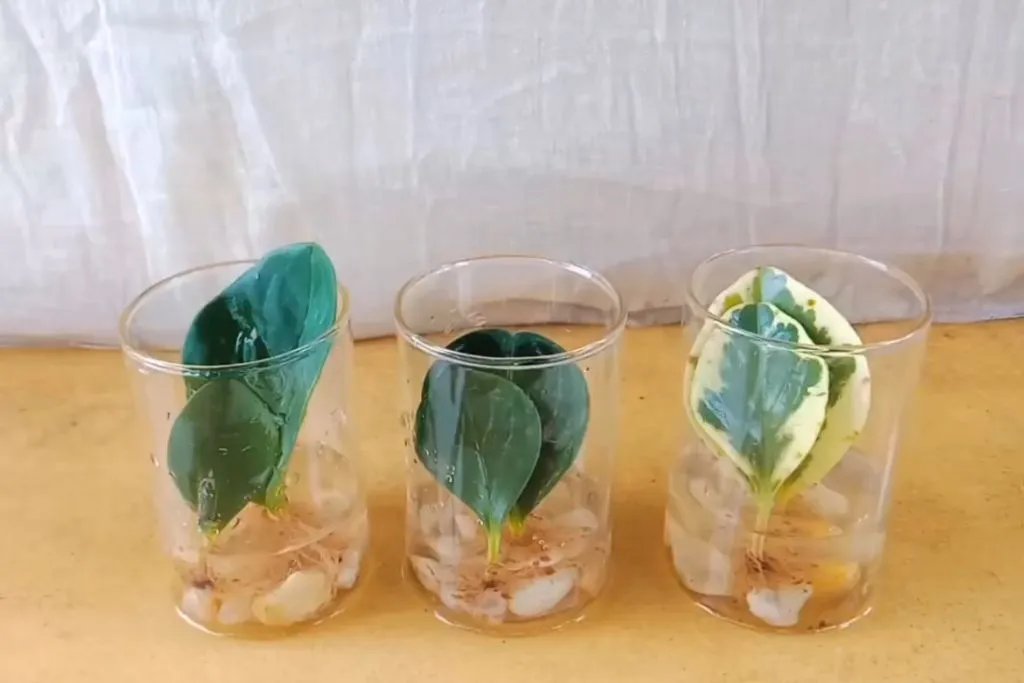Peperomias are a diverse and popular group of houseplants known for their attractive foliage and easy-care nature.
One of the most exciting aspects of owning peperomias is the ability to propagate them and share their beauty with friends and family.
While there are various methods of propagating peperomias, one of the most successful and rewarding approaches is water propagation.
In this guide, we will delve into the intricate details of peperomia propagation in water, exploring the process step by step and uncovering the secrets to successful propagation.
Understanding Peperomia Anatomy
Before we embark on our propagation journey, let’s take a closer look at the anatomy of peperomia plants. Understanding the plant’s structure is crucial for effective propagation.
Peperomias belong to the Piperaceae family, and their leaves, stems, and roots all play a vital role in propagation.
- Leaves: Peperomia leaves come in an array of shapes, sizes, and textures, making them a popular choice among plant enthusiasts. These leaves store essential nutrients that can aid in the propagation process.
- Stems: The stems of peperomias are generally fleshy and succulent, allowing them to store water. This water storage capability contributes to the success of water propagation.
- Roots: Peperomias typically have shallow root systems, which makes them well-suited for water propagation. The roots absorb water and nutrients, supporting the growth of new plants.
Benefits of Water Propagation
Water propagation is a preferred method for propagating peperomias for several reasons:
- Accessibility: Water propagation is relatively simple and accessible, even for beginners.
- Observation: Clear containers allow you to closely monitor the growth of roots, enabling you to gauge the plant’s progress.
- Nutrient Access: The plant can draw nutrients directly from the water, ensuring optimal conditions for growth.
- Low Maintenance: Water propagation eliminates the need for soil and reduces the risk of soil-borne diseases.

Read Details: How to Propagate Peperomia from Leaf with Soil.
Peperomia Propagation in Water (Step-by-Step)
Now, let’s dive into the step-by-step process of propagating peperomias in water:
Materials Needed:
- Healthy peperomia plant with a leaf or stem cutting
- Clean, sharp scissors or pruning shears
- Clear glass or container
- Filtered or distilled water
Step 1: Selection and Preparation of Cuttings:
Choose a healthy peperomia plant with a leaf or stem cutting. The cutting should ideally be taken from a mature plant with no signs of disease or stress.
Using clean, sharp scissors or pruning shears, make a clean cut just below a leaf node (the point where a leaf meets the stem).
Leaf nodes are essential as they contain meristematic tissue that promotes root growth.
Step 2: Allow Cuttings to Callus:
Place the cuttings in a dry and warm location, allowing the cut ends to callus. This step prevents excess moisture absorption during the initial stages of propagation.
Step 3: Place Cuttings in Water:
Fill a clear glass or container with filtered or distilled water. Submerge the cut end of the peperomia cutting in the water, ensuring that the leaf node is fully immersed.
Clear containers are ideal for water propagation as they allow you to observe root development.
Step 4: Provide Adequate Light:
Place the container in a location with bright, indirect light. Avoid exposing the cuttings to direct sunlight, as it can lead to excessive heat and stress.
Step 5: Monitor and Change Water Regularly:
Check the water level regularly to ensure that the cuttings are fully submerged. If the water becomes cloudy or stale, replace it with fresh, filtered water.
This prevents the growth of harmful bacteria and provides the cuttings with essential nutrients.
Step 6: Root Development and Potting:
After a few weeks, you should notice tiny roots starting to emerge from the leaf node. Once the roots are a few inches long, your peperomia cutting is ready for potting.
Gently transplant the cutting into a well-draining potting mix, ensuring that the roots are covered and the plant is secure.
Step 7: Acclimatization:
Place the newly potted peperomia in a location with bright, indirect light. Gradually expose the plant to longer periods of direct light to prevent shock.
Keep the soil consistently moist but not waterlogged.
Read: When, How, & All The Techniques about Peperomia Propagation.
Tips for Success
- Patience is Key: Water propagation takes time, and it’s essential to be patient. Root development can vary depending on factors like temperature, humidity, and the specific peperomia species.
- Water Quality: Use filtered or distilled water to prevent the accumulation of minerals that might hinder root growth.
- Temperature and Humidity: Maintain a warm and humid environment to encourage successful propagation. A humidity dome or a plastic bag can help create a mini greenhouse for the cuttings.
- Leaf Cuttings vs. Stem Cuttings: Both leaf and stem cuttings can be used for water propagation. Leaf cuttings might take longer to root compared to stem cuttings, but they can produce new plants as well.
- Avoid Overcrowding: If propagating multiple cuttings in the same container, ensure that they are not overcrowded. Sufficient space allows each cutting to develop roots without competition.
Related FAQs:
Can all peperomia varieties be propagated in water?
While many peperomia varieties can be successfully propagated in water, some might have better results with other propagation methods, such as stem cuttings in soil. Varieties with thicker leaves and succulent-like characteristics tend to fare well in water propagation.
How long does it take for peperomia cuttings to root in water?
Rooting time can vary depending on factors like temperature, humidity, and the specific peperomia species. On average, it can take anywhere from a few weeks to a couple of months for the cuttings to develop sufficient roots for potting.
Can I use tap water for water propagation?
Tap water can contain minerals and chemicals that might inhibit root growth or cause other issues. It’s recommended to use filtered or distilled water to prevent these potential problems.
Should I change the water during propagation?
Yes, it’s advisable to change the water every week or whenever it becomes cloudy or stale. Fresh water ensures that the cuttings have access to necessary nutrients and prevents the growth of harmful bacteria.
Can I propagate peperomia from a single leaf?
Yes, peperomias can be propagated from single leaves. However, this method might take longer compared to using stem cuttings. Make sure the leaf has a small portion of the stem attached to it (leaf petiole) for better chances of success.
What’s the best container for water propagation?
Clear glass containers are ideal for water propagation, as they allow you to observe root growth. Choose a container that provides enough space for the cuttings and keeps the leaf nodes submerged in water.
Should I provide artificial lighting for water-propagated cuttings?
While bright, indirect natural light is preferable, you can also use artificial lighting to supplement or provide consistent light conditions. Place the cuttings under a grow light with the appropriate spectrum for optimal growth.
What do I do once the cuttings have rooted?
Once the cuttings have developed sufficient roots (usually a few inches long), you can carefully transplant them into a well-draining potting mix. Make a small hole in the soil, place the cutting inside, and gently pat the soil around it. Water the newly potted cutting and place it in a location with bright, indirect light.
Can I propagate multiple peperomia cuttings in the same container?
Yes, you can propagate multiple cuttings in the same container, as long as there is enough space between them. Overcrowding can lead to competition for nutrients and hinder root development.
Are there any risks associated with water propagation?
While water propagation is generally low-risk, there’s a chance that the cuttings might rot if they’re submerged for too long or if the water becomes stagnant. Keeping an eye on the cuttings, changing the water regularly, and ensuring good air circulation can mitigate these risks.
Can I propagate variegated peperomias in water?
Yes, you can propagate variegated peperomias in water. However, keep in mind that variegated plants might have slightly slower growth compared to their non-variegated counterparts.
Is water propagation the only way to propagate peperomias?
No, water propagation is just one of the methods you can use to propagate peperomias. Other methods include stem cuttings in soil, leaf cuttings in soil, and even division for some clumping varieties.
Conclusion
Peperomia propagation in water is a fascinating and rewarding journey that allows plant enthusiasts to create new plants from existing ones.
By understanding the plant’s anatomy and following the step-by-step process outlined in this guide, you can increase your chances of successfully propagating peperomias.
The ability to watch roots develop and witness the growth of new plants is a deeply satisfying experience that highlights the wonder of plant life.
As you embark on your propagation adventure, remember to be patient, attentive, and eager to learn from the beautiful world of peperomias.
